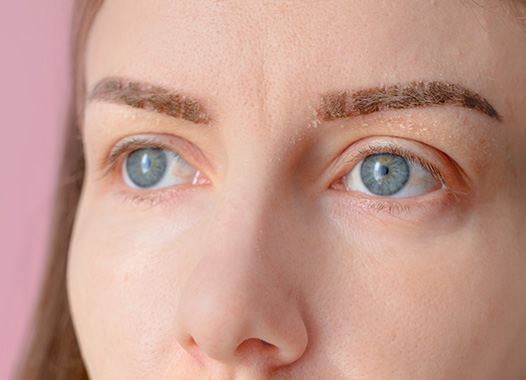


Eyebrows are an essential and prominent feature of the face. Usually, we rely on makeup and even eyebrow tattoos to fill up our eyebrows. However, with the advancement of medical science, eyebrow transplant has become a popular procedure and a more effective solution. An eyebrow hair transplant is a cosmetic procedure where hair grafts (plugs) are transferred to your brow area using your own hair. New hairs will grow from these grafts, thus producing a complete and natural look.
Our eyebrow restoration methods include techniques like Follicular Unit Transfer (FUT) and Follicular Unit Extraction (FUE), in which our expert hair surgeon in Maryland Dr. Douglas Burka moves individual hairs from an area of greater density on your scalp or body to your eyebrows.
With your opinions and ideas, our experts will personally design your eyebrows to achieve your desired look.
An eyebrow transplant is not advisable if you have:
Our hair surgeon Dr. Douglas Burka will review the following:
Additionally, you will need to collaborate with our team to:
Certain tests will be performed depending on your age and health conditions.
Things to avoid before your eyebrow hair transplant:
Contact us to schedule an appointment for your eyebrow restoration procedure with our experts at Mane Center for Advanced Hair Restoration.
Our surgeon Dr. Burka is fully experienced and takes care to place all the hair follicles in the proper direction and angle to achieve natural-looking results.
Yes, absolutely! You will be asked about your desired expectations regarding your eyebrow transplantation. Our surgeons can increase the width, height, length, density and change the shape (straight, curved, high arch, soft arch, upward, and “s” shaped) to match your idea of the perfect brow.
The recovery period for an eyebrow transplant is comparatively fast. There can be some scabbing around the brows for the first few days, which should not be picked at. Also, it will help if you avoid strenuous exercise up to 3 weeks after your surgery. Contact your surgeon if you experience any bleeding, swelling, or pus at the operation site.
You will notice the transplanted hairs falling out after a few weeks. This is totally normal because of the natural hair cycle process. Patients typically begin to see hair growth 3-4 months after the procedure.
This is an in-office procedure, and our team can keep you very comfortable by using appropriate medications.